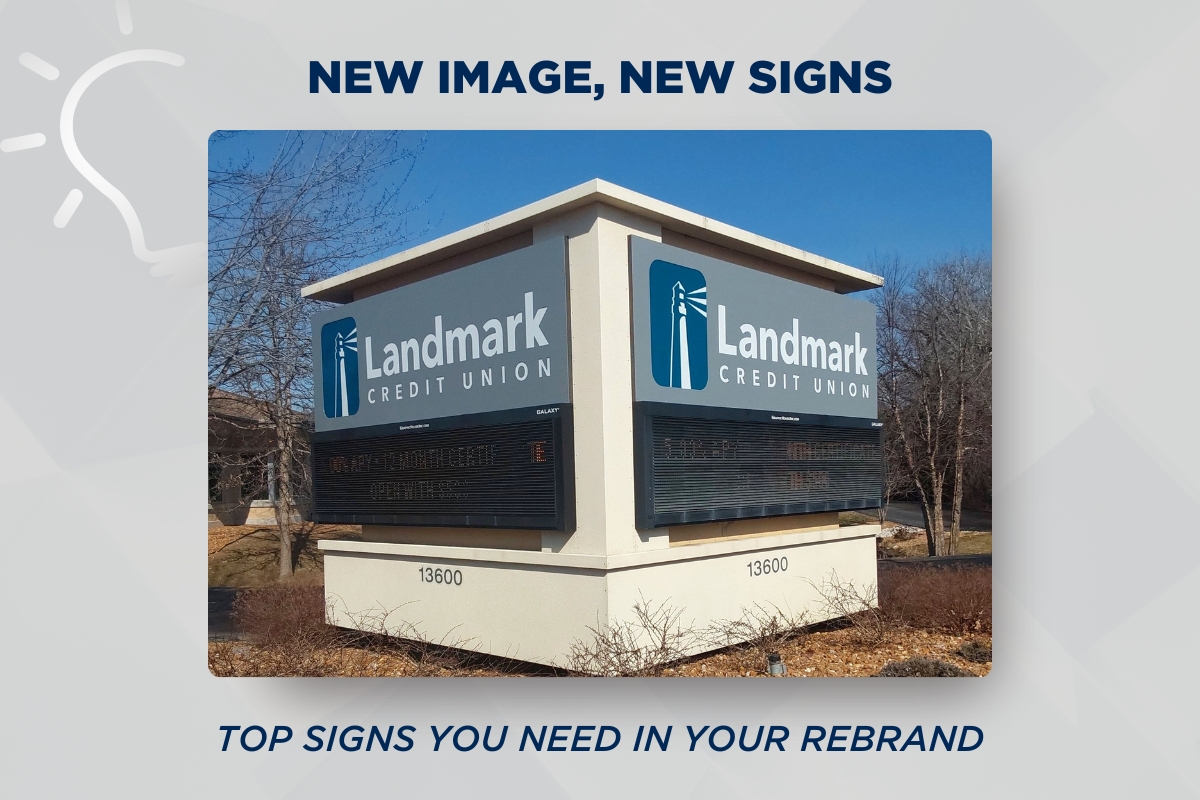Navigating the World of Commercial Property Signage: An Essential Guide for Businesses
Commercial signage requires both art and strategy. The importance of effective signage cannot be overstated. It’s not just about having a sign; it’s about creating a visual identity that resonates with your audience, reinforces your brand, and stands out in a crowded marketplace.
From the latest trends in design and materials to the complex regulations governing signage, this blog is designed to be your one-stop resource. Whether you’re a small business owner embarking on your first signage project or a seasoned professional looking to stay ahead of the curve, our insights and tips will help you make informed decisions.
Get ready to transform the face of your business with the power of effective commercial signage!
Significance of Commercial Signage
Commercial signage plays a pivotal role in shaping the first impressions of a business. It’s often the first point of contact between a company and its potential customers, setting the tone for the customer experience. A well-designed sign captures attention and conveys the essence of the brand’s identity, serving as a silent ambassador that communicates the business’s values, character, and professionalism.
Beyond advertising and brand reinforcement, signage is integral for effective wayfinding and navigation, guiding customers effortlessly to and within business premises. Commercial signage is more than mere information conveyance; it’s a vital tool for branding, customer engagement, and creating a positive and lasting impression.
Types of Commercial Signage
Exterior Signage
Commercial signage encompasses various types, each serving specific purposes and catering to different business needs. One of the most common types is exterior signage, including storefront, monument, and pylon signs. Storefront signs are directly mounted on the business premises, acting as a direct reflection of the brand. They can vary from simple, elegant lettering to elaborate, illuminated displays. Monument signs offer a ground-level display, often seen at the entrances of corporate complexes or shopping centers, providing a sense of permanence and prestige. Pylon signs are tall structures, ideal for businesses located off a highway or in areas where increased visibility is crucial. They are particularly effective for multi-tenant complexes, displaying multiple businesses on a single tall structure.
Interior Signage
Interior signage, on the other hand, includes wayfinding signs, informational displays, and promotional signs. Wayfinding signs are essential in large buildings or complexes, guiding visitors easily and efficiently. They include directory signs, aisle markers, and floor graphics. Informational signage provides details about products, services, or facilities, and is essential in retail stores, museums, and educational institutions. Promotional signs highlight special offers, new products, or upcoming events, often featuring eye-catching designs and persuasive language. Digital signage, a rapidly growing segment, offers dynamic content through digital screens, allowing for real-time updates and interactive experiences. Each type of commercial signage plays a distinct role in enhancing customer experience, reinforcing brand identity, and improving overall business visibility.
Design Considerations
When designing commercial signage, several key factors must be carefully considered to ensure the sign’s effectiveness and longevity. Visibility and readability are paramount. The sign should be clearly visible from a distance and from different angles, which requires thoughtful consideration of its size, placement, and the contrast between the text or graphics and the background. Illumination can also play a critical role, especially for businesses that operate during evening hours. Readability extends beyond font size; it includes the choice of a clear, easily legible font style and using colors that stand out yet remain consistent with the brand’s identity.
Durability and maintenance are equally important. The materials chosen for the sign should withstand local weather, extreme heat, cold, or moisture. This resilience ensures the sign remains in good condition over time, maintaining its aesthetic appeal and functionality. Maintenance considerations are crucial, as signs need regular cleaning and, in some cases, repairs. For illuminated or digital signs, this includes electrical maintenance. A well-maintained sign ensures ongoing visibility and effectiveness and reflects positively on the business, indicating attention to detail and care for customer experience.
Legality and Compliance
Navigating the legal landscape of commercial signage is crucial for businesses to ensure compliance and avoid potential legal pitfalls. Local regulations often dictate the size, placement, and type of signage allowed, varying significantly from one municipality to another. These local zoning laws and ordinances are designed to maintain a community’s aesthetic and safety standards, and non-compliance can result in fines or the need to remove or alter the signage.
Additionally, the Americans with Disabilities Act (ADA) imposes specific requirements for signage to ensure accessibility for individuals with disabilities. This includes Braille for the visually impaired, appropriate contrast and font size for easy readability, and proper mounting height and location. Failure to comply with ADA guidelines can lead to legal challenges and penalties. Therefore, understanding and adhering to both local zoning laws and ADA requirements is essential for businesses to create effective, lawful, and inclusive signage.
Innovative Trends in Commercial Signage
The landscape of commercial signage is rapidly evolving, with innovative trends driven by technology integration and sustainability. Digital signage has become increasingly popular, offering dynamic content through LED or LCD displays. This technology allows businesses to update messages in real-time, showcase multimedia content, and engage customers through interactive experiences like touchscreens and augmented reality.
Another trend is integrating smart technology, such as QR codes and NFC tags, which bridge the physical and digital worlds, enabling customers to interact with signs using their smartphones. On the sustainability front, there is a growing emphasis on eco-friendly materials and energy-efficient LED lighting. Solar-powered signs are gaining traction, reducing electricity consumption, and promoting a greener brand image. Biodegradable materials and low-VOC (volatile organic compounds) paints are also being adopted to minimize environmental impact. These advancements reflect a shift towards more adaptable, interactive, and environmentally conscious commercial signage.
Commercial signage is a multifaceted domain, crucial for making impactful first impressions, reinforcing brand identity, and facilitating navigation. Ultimately, well-conceived and executed commercial signage is not just a business necessity; it’s a powerful tool for shaping customer experiences, reinforcing brand presence, and adapting to the dynamic demands of the modern market.
Looking for a sign to reach out to a signage provider? Get some sign inspiration from Innovative Signs, or check out our free cost calculator today.








